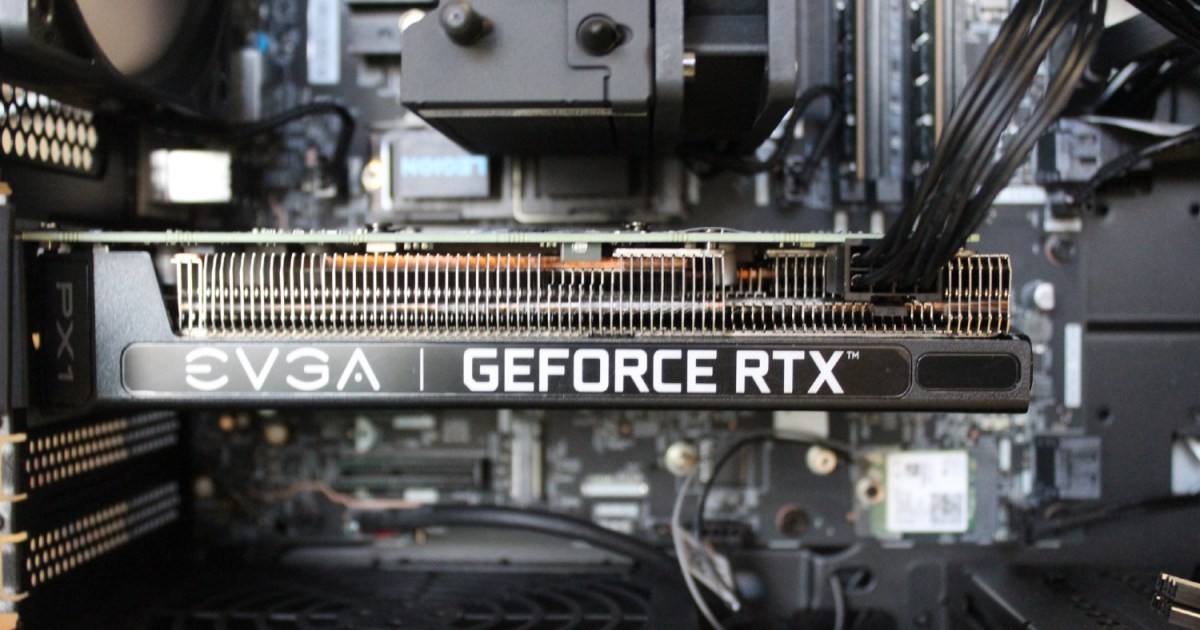Even if your PC is getting old, it doesn’t have to mean that playing the latest games is out of the question. While some performance-boosting features were previously reserved for those who own one of the best GPUs or one of the top processors, modders have now stepped in to change that narrative.
As a result, a mod enables using Nvidia’s DLSS 3 (or rather, AMD’s FSR 3) on much older graphics cards. Confusing? Don’t worry, it makes a lot more sense than it seems, and you could use it to boost your PC’s gaming performance by up to 75%.
DLSS is Nvidia’s game-changing frame generation technology. At least on paper, it’s locked to RTX 40-series graphics cards. AMD’s FSR 3 is the counterpart to Nvidia’s DLSS 3, and it’s open-source, meaning it’s available on many more graphics cards than Nvidia’s exclusive tech. On the surface, you’d think that this would mean that frame generation should be available to a wide range of gamers, but it isn’t. This is because the adoption of FSR 3 has been very slow, and as of today, it’s only available in four games.
However, Digital Foundry recently spotted a mod that works with all the games that support DLSS 3 natively. The mod essentially tricks the computer into believing that the PC is running an RTX 40-series card, but it is, in fact, usable on older RTX GPUs (20-series and 30-series). The trick is that it doesn’t run DLSS 3; instead, it enables the open-source FSR 3 that works on many graphics cards.
Essentially, it lets you run games with FSR 3 that would not otherwise be able to run it, not due to GPU limitations, but due to the fact that the feature is unavailable in that particular title. The funny part? It doesn’t work on AMD GPUs.
Running the mod requires injecting DLL files into a game’s directory, editing the registry, and finally, enabling the feature in the game. All of that makes this FSR 3 disguised as DLSS 3 work, and according to Digital Foundry, it seems pretty brilliant.
Testing the mod with several AAA games, such as Cyberpunk 2077, showed a great performance boost on an RTX 3080. With the mod running, the RTX 3080 was able to maintain over 100 frames per second (fps) at 1440p on RT overdrive mode; without it, it hit a much less impressive 60 to 70 fps. This marks an up to 67% boost at 1440p. Spider-Man: Miles Morales saw even greater gains, with an uplift of up to 75%.
Unfortunately, running this DLSS 3-slash-FSR 3 amalgamation results in some downsides, including visual artifacts and higher latency. These issues have mostly been ironed out in games that support FSR 3, but seeing as this is just a mod, it’s no wonder that it’s not perfect. Check out Digital Foundry’s video if you’d like to learn more about the mod and potentially try it out for yourself.
Turning your older Nvidia GPU into a vessel for AMD’s FSR isn’t the only thing you can do to gain some extra frame rates. PCGamer recently dug up an interesting GitHub project referred to as ReBarUEFI, which is a BIOS mod that will allow you to run Resizable BAR (ReBAR) on older PCs dating as far back as 2011 that wouldn’t otherwise support it. ReBAR is a feature that lets your CPU access the full frame buffer of the GPU instead of being limited to only 256MB, which is the case on hardware that doesn’t support it.
Older motherboards often don’t support Resizable BAR, but the mod allows you to get past these restrictions and run it. ReBarUEFI adds the setting in the BIOS on older motherboards, allowing the CPU and the GPU to communicate effectively. This translates to a performance boost of up to 12%, according to the mod’s author, and possibly much more on an Intel Arc GPU, as those pretty much require ReBAR.
While the DLSS 3 mod seems easy enough to enable, ReBarUEFI is a little trickier. If you really want to give it a go, we recommend reading through the instructions carefully and going in with the idea that something might go wrong — and if things go wrong in the BIOS, your entire PC may be affected.
Either way, it’s great to see people finding ways to bring newer technology to older PCs, even if it takes some tinkering to get them to work.
Editors’ Recommendations

Wanda Parisien is a computing expert who navigates the vast landscape of hardware and software. With a focus on computer technology, software development, and industry trends, Wanda delivers informative content, tutorials, and analyses to keep readers updated on the latest in the world of computing.


